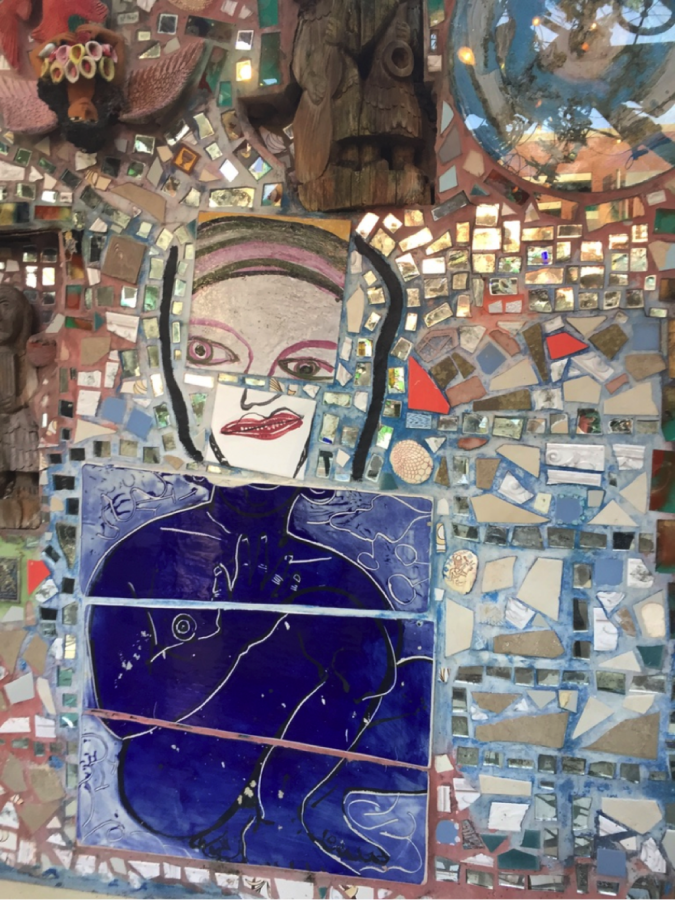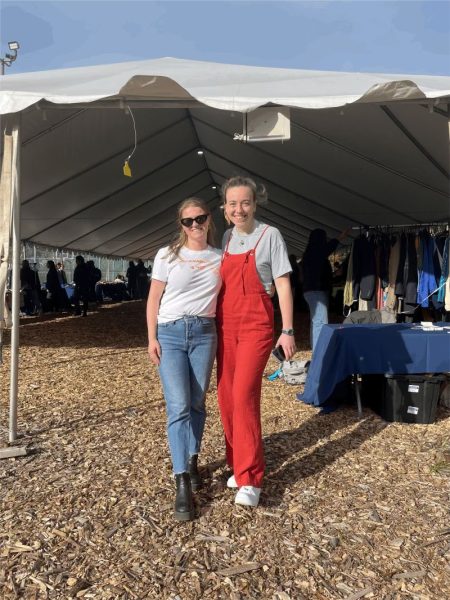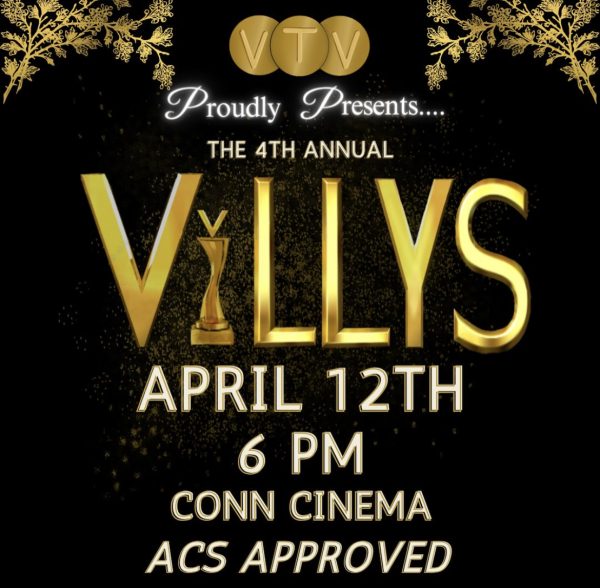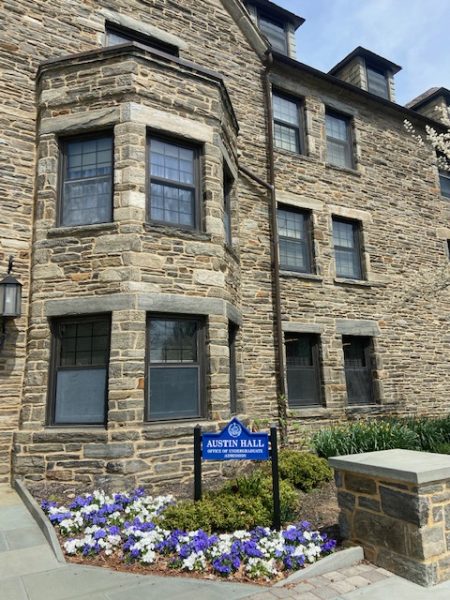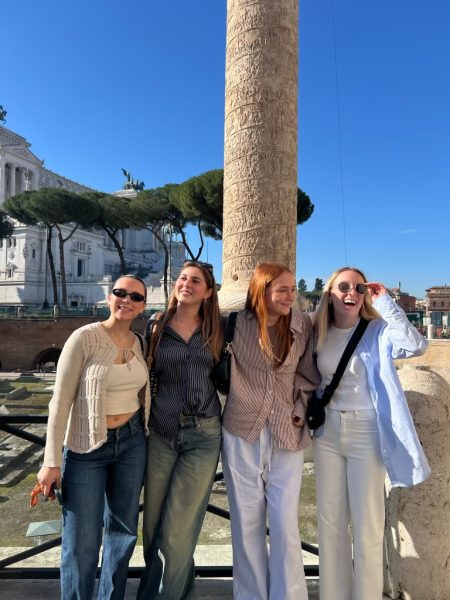Isaiah Zagar: The Man Behind the Magic of Philadelphia’s Art
September 13, 2016
This weekend, I traveled to one of Philadelphia’s most uniquely and fascinating art museums: Philadelphia’s Magic Gardens. The museum, which features a massive outdoor installation created from found and repurposed objects, was founded by renowned artist Isaiah Zagar.
As it so happened, Zagar, the man behind the colorful, surrealist “gardens,” was at the museum when I visited.
“Isaiah likes to come here every now and then with his dog,” one of the museum’s attendants said. “He loves to meet visitors and talk about the art.” The attendant then suggested that I go see Isaiah and speak with him, so I did.
Within minutes of my arrival, I ventured outside and stumbled upon Zagar, who sat among his art at a small metal table, accompanied by his beloved dog. There, he watched visitors pass by and greeted them.
At 77, Zagar is as vibrant as his art. Although a rather calm man, the artist spoke with great passion and enthusiasm about his art to me. As I sat down with him, Zagar kindly and, eagerly listened to my questions and spoke about his work.
“That’s Mr. Blue,” Zagar said as I sat down, pointing to the black Labradoodle standing loyally by his side. “Some people like to call him Señor Azul.”
After introductions and a few moments spent petting Mr. Blue, Zagar began to tell me about the museum, its history and the inspiration behind it all.
According to Zagar, the Magic Gardens technically began in 1994, the year he purchased the property. However, Zagar considers 1987 the museum’s true start date, as it was the year he started living on South Street. “On 402 South,” he said, “the Eyes Gallery. That was my first building, where I started all this.”
The museum was completed and officially opened in 2008, but, according to museum staff, Isaiah considers it a work in progress. To this day, small changes and additions are being made to the museum. Although technically done, the museum will never be considered truly finished by its creator.
Curious about why he started this tremendous, ongoing project in the first place, I asked Zagar about his inspiration for the museum. He then pointed to a name spelled out on tiles on a wall across from the table at which we sat. The name read: “Clarence Schmidt.”
“Clarence was a mason,” Zagar said. “He made environmental installations, big sculptural installations. They were big and impressive, and they touched me deeply.”
“I knew Clarence,” Zagar admitted when asked about his relationship with Schmidt. “I don’t know if I’d call him a friend. You know, there’s a wide definition of friendship. I’d consider him more like a mentor, though. He gave me the courage to start all this.”
According to Zagar, Schmidt was working in Woodstock when they met. “He was on Ohayo Mountain Road, outside Woodstock,” Zagar explained. “He worked with tar and aluminum. His work was very different than mine. He used throw-away stuff, like my work, but I’m working with skills. I went to school, and I drew. I like drawing. That’s what I like to do.”
“I went to Pratt Institute in New York,” Zagar continued. “I graduated in 1959 and, actually, Pratt was instrumental in me getting to Clarence. I got a scholarship to study, then I got another scholarship to the Art Student’s League in Woodstock. I worked with a teacher after that who brought me to Clarence.”
Inspired by Clarence and his work, Zagar then set out to create the Magic Gardens. Zagar used found objects, tiles, shattered mirrors, bottles, wheels and clay, among other things, to create the exhibit. One of the most widely used materials in the exhibit is tile.
According to Zagar, he would draw parts of faces, bodies and other images on tiles and bake them in a kiln to preserve them — he would then take parts of faces and features created at different times and assemble them later, to create unusual, almost abstract images.
These painted images, along with the rest of the museum’s vibrant sculptural work, draw a global crowd to the museum each year. Zagar credits the Internet as the reason that people all around the world know of and come to visit his museum today.
I asked Zagar what he wants these visitors to take away from his work. “I get that question all the time,” Zagar said. “I would like the impossible. I want people to feel the same way I felt when I saw Clarence’s work for the first time — it was inexplicable. It was a revelation, a powerful force. That’s what I want.”
“But people feel like they’re having a good time when they come here. It’s fun and happy. That’s what people tell me. And the work doesn’t take itself too seriously. It’s nice.”
Nice may be an understatement. The Magic Gardens are, to Isaiah Zagar’s credit, truly awe-inspiring and revelatory. More than that, though, they are something to be experienced for the work is undeniably moving and a powerful force in its own right.

